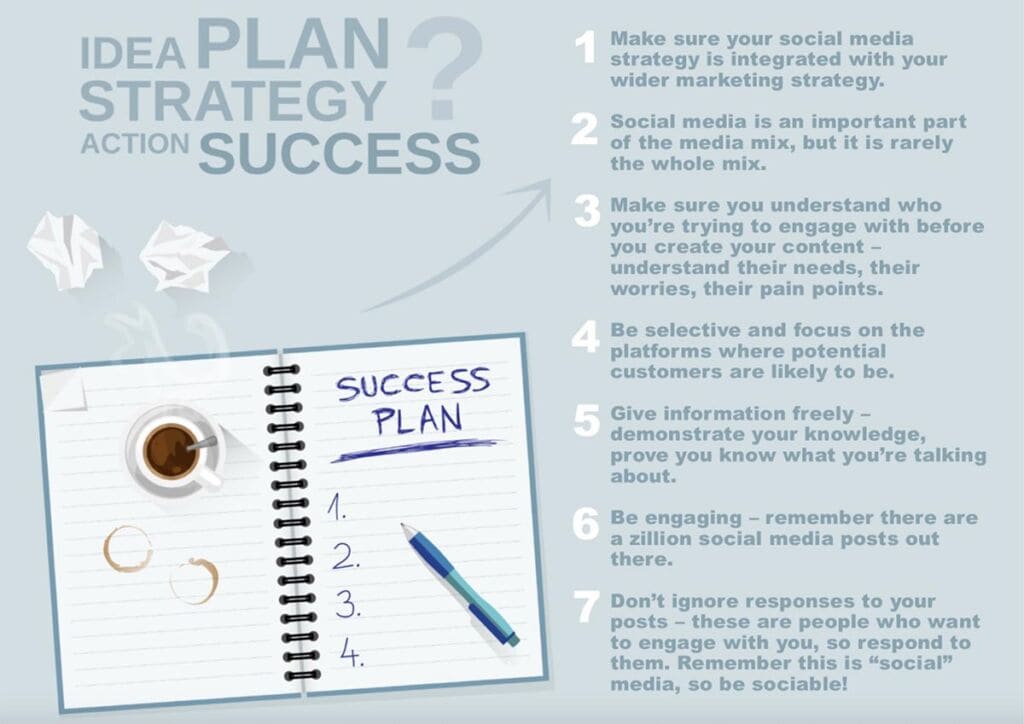The Really Helpful Marketing Company recently conducted a survey of UK businesses and their marketing activities. We asked what activities formed their marketing media mix – the results show clearly that whilst digital media rules, there is still a place for more “traditional” methods of engaging target audiences.
The survey clearly shows Social Media and Content marketing to be the most widely used marketing channels across businesses of all sizes. Other digital channels including Email marketing and SEO also feature strongly, particularly for larger businesses.
The results are reflective of wider trends in media usage, which in recent years has seen a continued decline in the use of traditional printed media and an upsurge in digital marketing. This is particularly true of small to medium sized businesses, and according to a recent survey by Magisto, SMEs are shifting drastically away from print and TV advertising to social media and video content, a trend which they argue is driven mostly by the Millennial generation. The survey goes on to suggest that Millennial marketers are 84 percent more likely to use social media to promote their small businesses than invest in print advertising – and that Millennials are 136 percent more likely than Baby Boomers to create videos for social media – virtually no Millennials marketing SMEs would invest in television advertising.
These trends are mirrored in our own survey, which shows incredibly low levels of investment in media such as press advertising, radio outdoor and other print advertising for businesses with fewer than 20 employees. That said, there is still a strong showing for networking and events among smaller businesses – around two thirds of micro businesses and 100% of SMEs surveyed use networks or events as part of their marketing mix.
The benefits of networking for small businesses are abundantly clear – opportunities are developed through building a personal profile in local markets, gaining referrals, and by developing connections and supplier networks. All done through being seen, developing relationships and gaining trust.
It could be said that this is real “social” marketing.
Gaining referrals through business networks is not just about showing up to a meeting. No business owner will refer you to one of their contacts unless they trust you – it’s too much of a risk to their reputation. So how do you build trust?
Well, for starters you commit to the network – you turn up to meetings regularly, you don’t just dip in and out when you feel like it.
And you talk to people, about your experience, about their problems. You give advice, impart useful information. You give them confidence that you could help them – and others. And you don’t sell to them – you simply help them to understand why your product or service is so good. So that when the time is right, they’ll choose you, or they’ll recommend your company to someone else.
It’s the same principle on social media – it’s a network just like any other. The power of a network doesn’t just come from the people you’re connected to. It’s the multiplier effect of their connections and subsequent connections that count. So, the marketing opportunity lies in being recommended – or being shared. And no-one is going to share a blatant sales pitch – not unless there’s something in it for them.
So what content is most sharable? Well, that depends.
The trick is in knowing your target audience. It always starts with your target audience. What are they interested in? What are their pain points? What keeps them awake at night? What problems do they have that you can shed a light on? And think about what you’re trying to achieve with your marketing. Are you trying to generate awareness of your brand, website traffic or leads? What part is it playing in your sales funnel? How does it fit with your wider marketing strategy?
Once you’ve got clarity here, you can begin looking at interesting ways to get your message out there. Remember, millions of pieces of content are posted every day – if you want your content to be read, and then shared, it’s got to be interesting, engaging, imaginative…
So think about video, quizzes, guides, whitepapers, trends, research, checklists, infographics, top tips and “how to” content. Think about mythbusters, jargon busters and glossaries.
However you choose to present your content – make it relevant. Make it helpful and useful to your target audience. Don’t just post content for its own sake – create a clear plan and stick to it.

